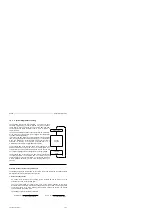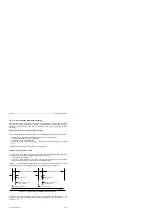
Introduction to STEP 5
S5-95F
Block Header
Besides the block header, function blocks have organizational forms that other blocks do not have.
A function block's memory requirements consist of the following.
•
Block header as for other blocks (five words)
•
Block name (five words)
•
Block parameter for parameter assignment (three words per parameter).
Creating a Function Block
In contrast to other blocks, parameters can be assigned to FBs.
To assign parameters, you must program the following block parameter information.
•
Block Parameter Name (Formal Operand)
Each block parameter as a formal operand is given a designation (DES). Under this designation
it is replaced by an actual operand when the function block is called.
The name can be up to four characters long and must begin with a letter of the alphabet. You
can program up to 40 parameters per function block.
•
Block Parameter Type
You can enter the following parameter types.
- I
input parameters
- Q
output parameters
- D
data
- B
blocks
- T
timers
- C
counters
In graphic representation, output parameters appear to the right of the function symbol. Other
parameters appear to the left.
•
Block Parameter Data Type
You can specify the following data types.
- BI
for operands with bit address
- BY
for operands with byte address
- W
for operands with word address
- K
for constants
7-12
EWA 4NEB 812 6210-02
















































